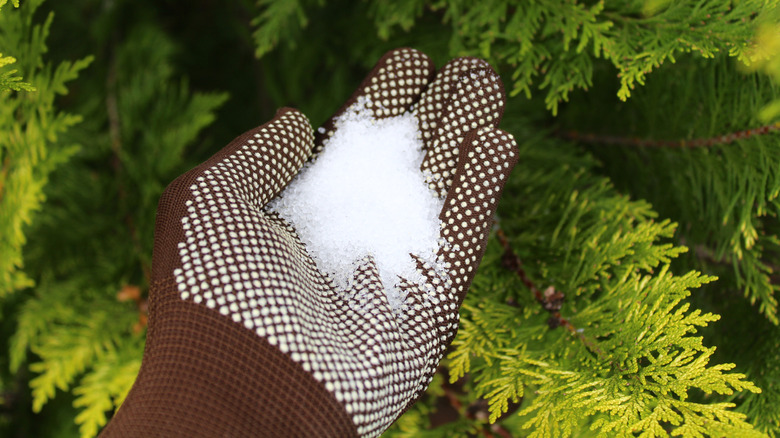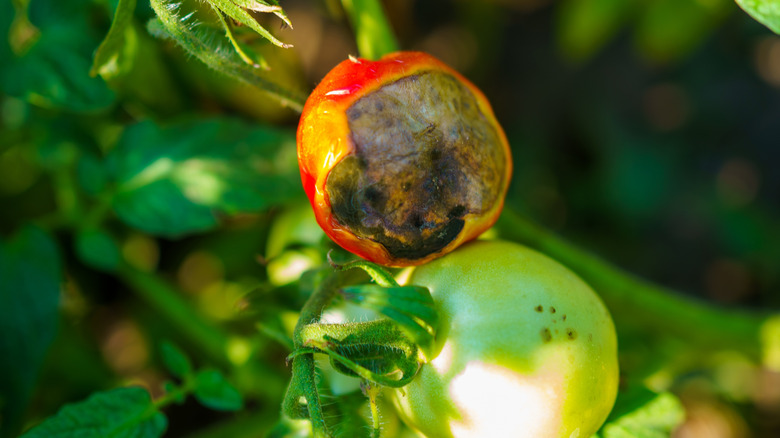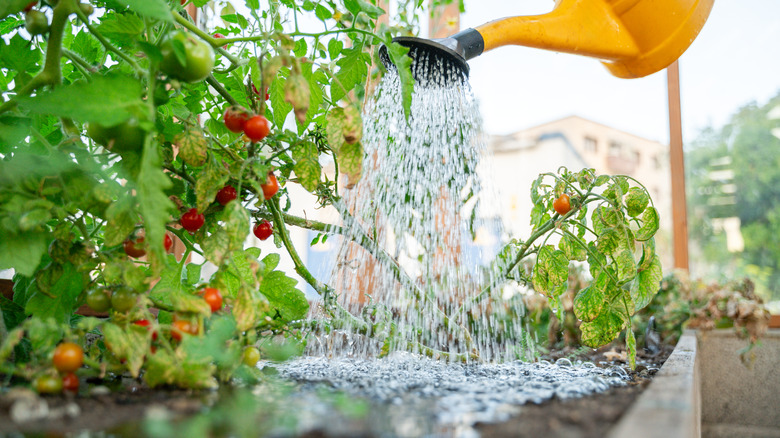How To Tell You Have Used Too Much Epsom Salt In Your Plants
Some garden home remedies can be beneficial, while others are simply an overrated gardening tip with no basis in fact. The real problem arises when a home remedy proves to be troublesome to the plants and the environment. Epsom salt (Magnesium sulfate) use in the home garden falls into that category. There are smart ways to use Epsom salt around the house, but the garden isn't one of them. Every spring, the idea of using Epsom salt as a cure-all for everything starts to trend. It seems pretty benign, but this is far from the case.In fact, if your plants appear stunted or have yellowing leaves, this could be a sign that you've used too much Epsom salt.
Magnesium is found naturally in most soils and as this mineral breaks down, it becomes available to the plants. Soils that are acidic or sandy could be deficient in magnesium. Plus, the mineral may not be available to the plants due to dry soil or the lack of additional nutrients that work synergistically with magnesium to make it available. However, Epsom salt is not the one-size-fits-all answer to garden problems, and can cause nutritional imbalances in the soil that create even bigger issues. The much-touted benefits of using Epsom salts in the home garden have been debunked thoroughly, and there are other ways of ensuring your plants get the nutrients they need for a healthy crop without using it.
Signs you may have too much epsom salt in the garden
To add to the confusion around using Epsom salt in the garden, some of the signs that your plants exhibit are caused by excessive use and not the lack of it. For instance, if your soil has too much magnesium (Epsom salt), it can inhibit the uptake of calcium, another vital nutrient for plants. It is this lack of available calcium that causes blossom end rot and poor fruit set in tomatoes and peppers. Additionally, spraying Epsom salt and water on leaves can result in leaf scorch, where the edges turn brown and crispy.
You'll also find that adding too much Epsom salts can increase mineral contamination in the water that soaks into the soil, thereby affecting surrounding plant growth and even the groundwater. Yellowing leaves (officially called chlorosis) can happen with an excess of magnesium because its presence may inhibit plants from taking up sufficient iron and manganese, which are necessary for photosynthesis. This means that over time, too much magnesium can create an imbalance which can lead to deficiencies that weaken plants and stunt growth. So, while it's tempting to use Epsom salt since it's inexpensive and easy to apply, this overrated garden tip can do more harm than good for most plants.
How to remedy too much epsom salt
To remedy the problem of excessive Epsom salts, there are a couple of things you can do. First, test your soil to determine if you truly have too much magnesium. Always test your soil before adding any amendments, no matter how safe they seem to be. A soil test kit is available at garden stores and retailers, or your county extension office will test your soil for you, usually for free. Adding organic material like leaf mold, compost, or dolomite lime can help release the magnesium that is available in the soil without adding anything else.
If your soil test indicates too much Epsom salt in the garden, flush the ground thoroughly to wash out the excess. This method, called leaching, dissolves the salts and flushes them away. Do this a few times before planting in the spring to remedy the situation. Use your soil test kit again to determine if the magnesium has been brought down to a healthier level.
For smaller-sized gardens, a smart container gardening tip for plants showing signs of excess magnesium salt would be to repot the entire plant. To do so, unpot the plant, rinse the roots thoroughly in clean water, and then repot in fresh potting soil. This is a drastic but effective way to flush the salts away and give your container garden a fresh start.


